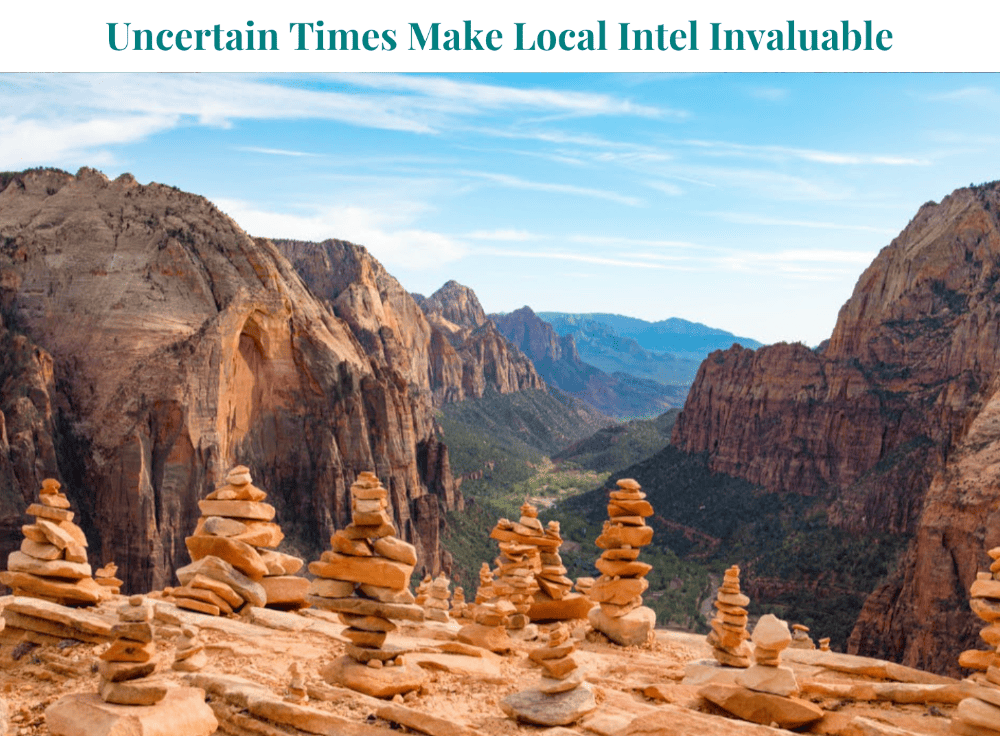Costa Rica’s Natural Wonders: Insider’s Guide
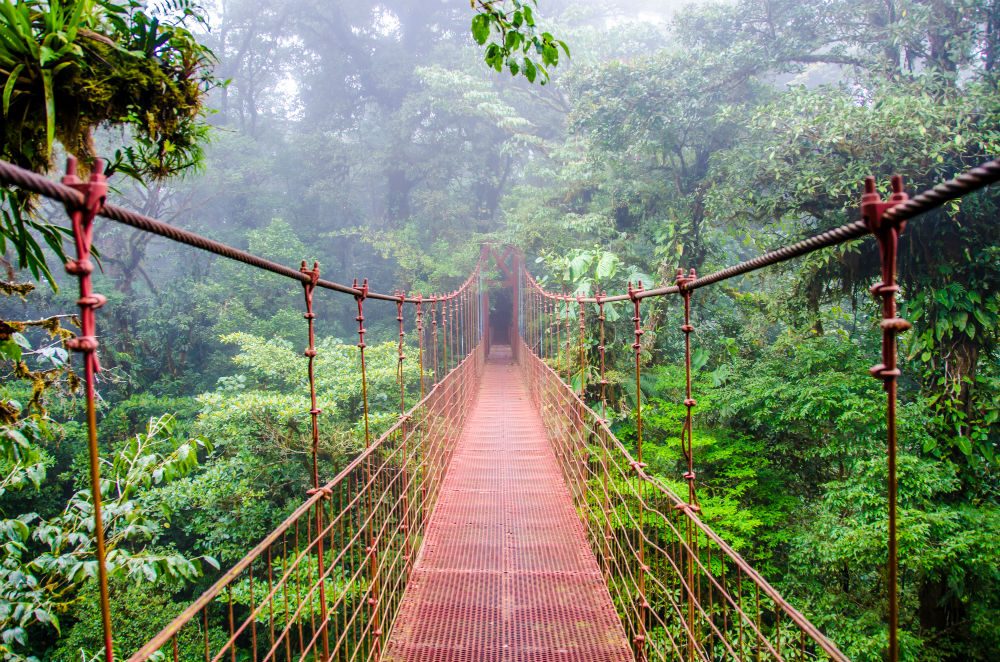 Monteverde, Costa Rica. Photo: Shutterstock
Monteverde, Costa Rica. Photo: Shutterstock
The insider advice on this page is from one of Wendy’s Trusted Travel Experts for Costa Rica: Priscilla Jimenez.
Priscilla has been living in Costa Rica throughout the pandemic; many of the country’s rural areas, national parks, and rainforest regions have seen few (or even no) cases of Covid. The lodges that Priscilla’s company owns have employed a variety of safety measures, from universal mask usage (that goes for her nature guides and private drivers as well) to keeping rooms empty for 24 hours between guests and frequently sanitizing public areas. She favors hotels and lodges that have received the World Travel & Tourism Council’s Safe Travels stamp, certification for which involves unannounced inspections; many of these hotels also have restaurants where you can eat outdoors.
Where to Stay and Eat
Best bang-for-your buck hotel
Of the many wonderful ecolodges on the Osa Peninsula, Bosque del Cabo is a great option when wildlife expectations are high but budgets are tight (and even when they’re not): The spectacular cliff-top setting overlooking the ocean and its 700-acre private forest reserve make it ideal for nature lovers, and it has an excellent assortment of room types, a couple of very nice villas, and fantastic naturalists.
Restaurant the locals love
On Route 24, the coastal highway between Orotina and Herradura, there is a small, very simple place called Restauranticos. Their ceviche is among the best anywhere in Costa Rica. They have fish, shrimp, and mixed versions; the shrimp ceviche has a sauce of spicy tomato and lemon juice at the bottom of the bowl that adds a whole different dimension to the dish. Next, you must order their patacones. Patacones are fried green plantains, far better than French fries or anything similar. At Resturanticos, they serve them with a bowl of frijoles molidos (mashed beans), another of pico de gallo, and another of carne en salsa. Each person should get their own ceviche, then order a plate of six or ten patacones to share.
Meal worth the splurge
Restaurante Silvestre. Located in one of San José’s old neighborhoods, this special place has a great atmosphere and features a new approach to Costa Rica’s cherished cuisine, making use of responsibly caught fish, organic produce, and other ingredients from entrepreneurs who are passionate about their craft.
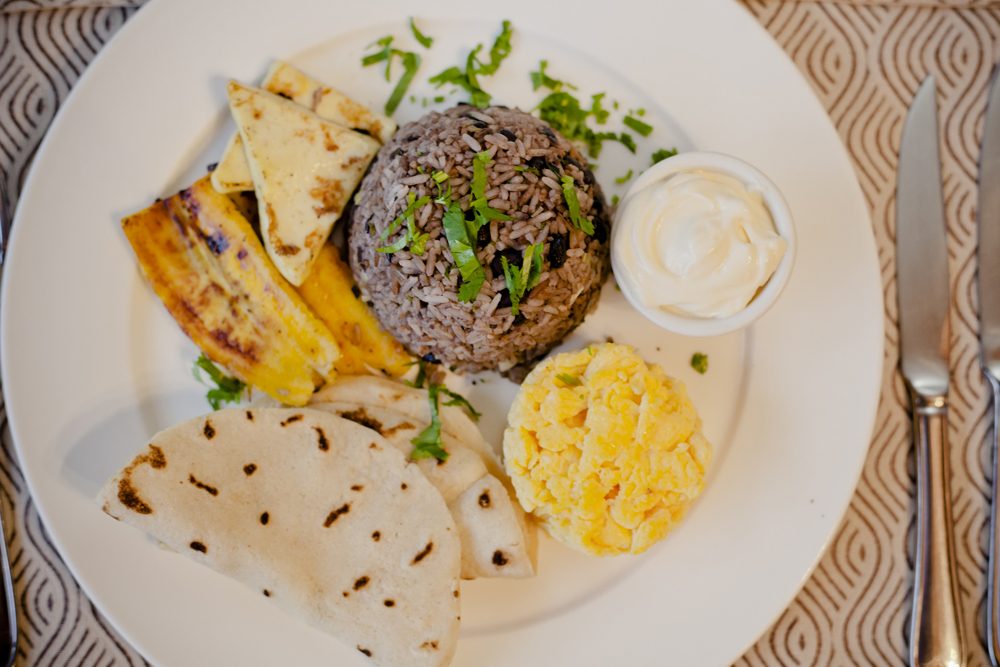
Gallo Pinto, Costa Rica
Dish to try
Gallo pinto, or rice and beans. It’s usually fried with onions and cilantro, but many other things can be added. Not too long ago, most locals ate some version of this at every meal, but these days Costa Ricans prefer a more varied diet—though many still eat pinto at least a few times a week. A favorite place for it is La Posada de la Luna in Cervantes, on the road to Turrialba, which is also famous for its cheese tortillas. Be sure to check out their collection of old Costa Rican photographs and artifacts (the restaurant has been open since 1963). Soda Tala also serves a delicious gallo pinto in San José’s Central Market. Still owned by founder Natalia “Tala” Cervantes, this place has been in business for over 50 years. Their signature breakfast dish is Tala Pinto: a stacked plantain leaf, handmade corn tortilla, egg patty, and gallo pinto, all bathed in shredded beef and tomato sauce. Expect to wait for a table that you may end up sharing with someone else, but that’s a good way to get to know Costa Ricans.
What to See and Do
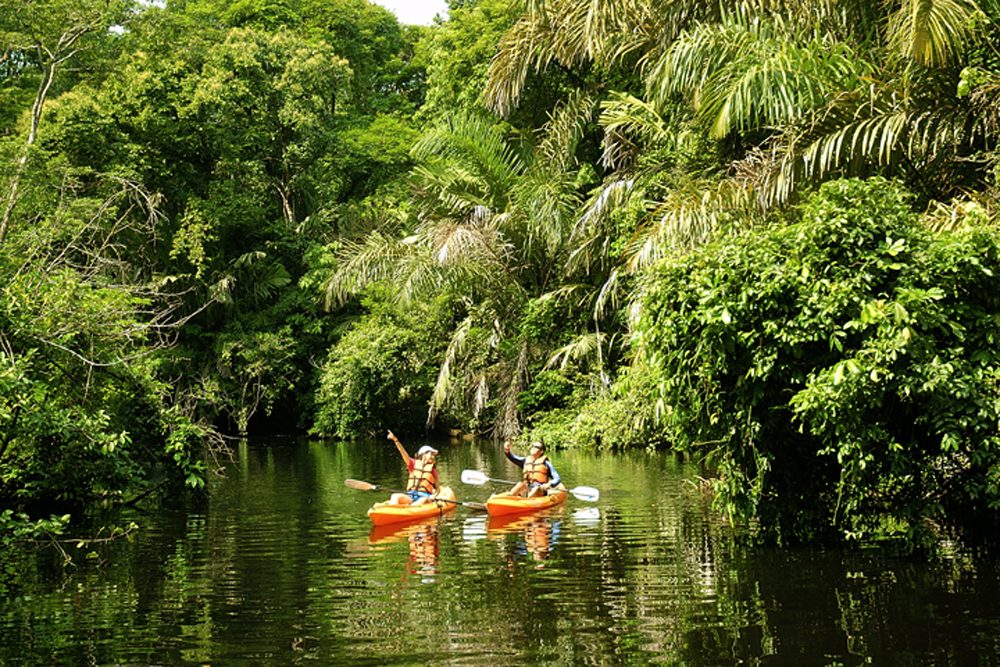
Kayaking Tortuguero National Park, Costa Rica
Don’t miss
Tortuguero National Park. Priscilla’s company owns and operates the Tortuga Lodge & Gardens, which was designed to give travelers the best possible experience of this exceptional lowland flooded rainforest and its wildlife. This is also the best rainforest kayaking experience in Costa Rica: It’s easy to see three species of monkeys, crocodiles, caimans, some of Costa Rica’s most elusive water birds, and the endangered great green macaw.
Don’t bother
You’ll find ads online for all-inclusive resorts in the Guanacaste region, claiming that you can visit the rainforest, hike a volcano, or go whitewater rafting on a day trip. In reality, these resorts couldn’t be further from the pulse of Costa Rica, and those “day trips” are 5am–8pm affairs that will leave you exhausted! The all-inclusives are fine as long as all you want to do is relax by the beach.
Hidden gems
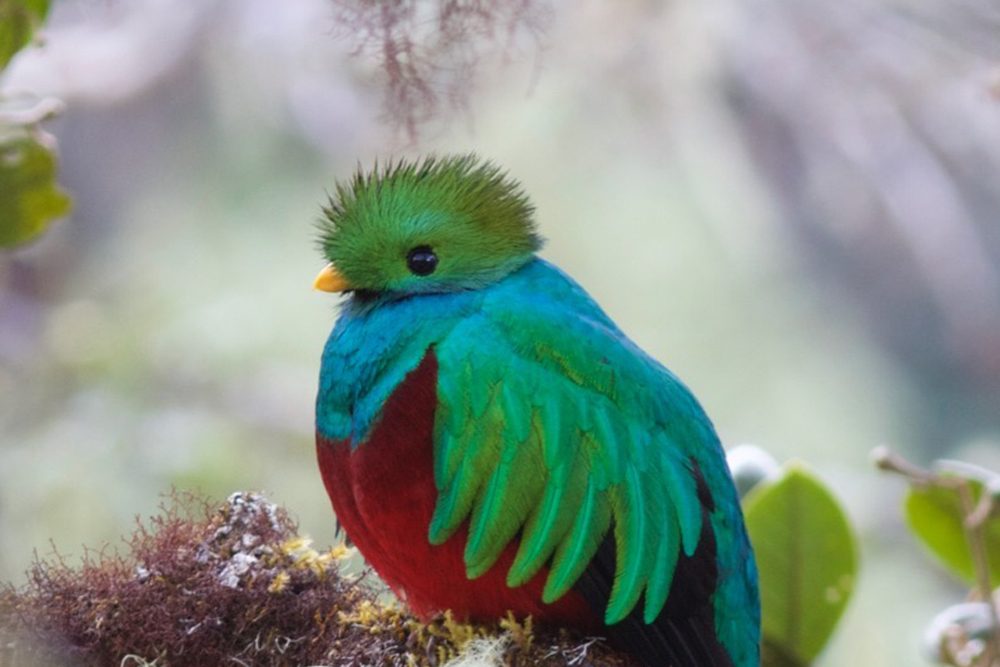
Quetzal, Costa Rica. Photo: William Grandados R. Photography
Golfo Dulce, on the south side of the Osa Peninsula. Golfo Dulce is a unique geographical accident of plate tectonics, which created a gulf with a depth of nearly 700 feet. It’s the only tropical fjord in the Americas, and its waters host a large number of marine creatures: It’s possible to observe dolphins and manta rays here almost year-round. From time to time, visitors can see one of the largest but most docile species of fish, the whale shark. Between August and October, you might spot a gigantic humpback whale on its annual migration to tropical waters. Golfo Dulce is protected by evergreen forests; one of Costa Rica’s newest national parks was created to guard and support the rich ecology of this area. Several species of mammal inhabit the nearby rain forest, including monkeys, elusive felines (jaguars and such), peccaries, and the largest animal you will find in tropical forests: the tapir (weighing in at up to 700 pounds). You can also hike among a staggering variety of trees, bushes, and plants that flourish here, and a vast number of colorful birds, such as parrots, macaws, and toucans. To get to the region, fly into the port town of Golfito, then boat 30 minutes to one of the remote lodges on the gulf. Priscilla recommends Playa Cativo Ecolodge, a beachfront boutique hotel set in 1,000 acres of private rainforest surrounded by the Piedras Blancas National Park.
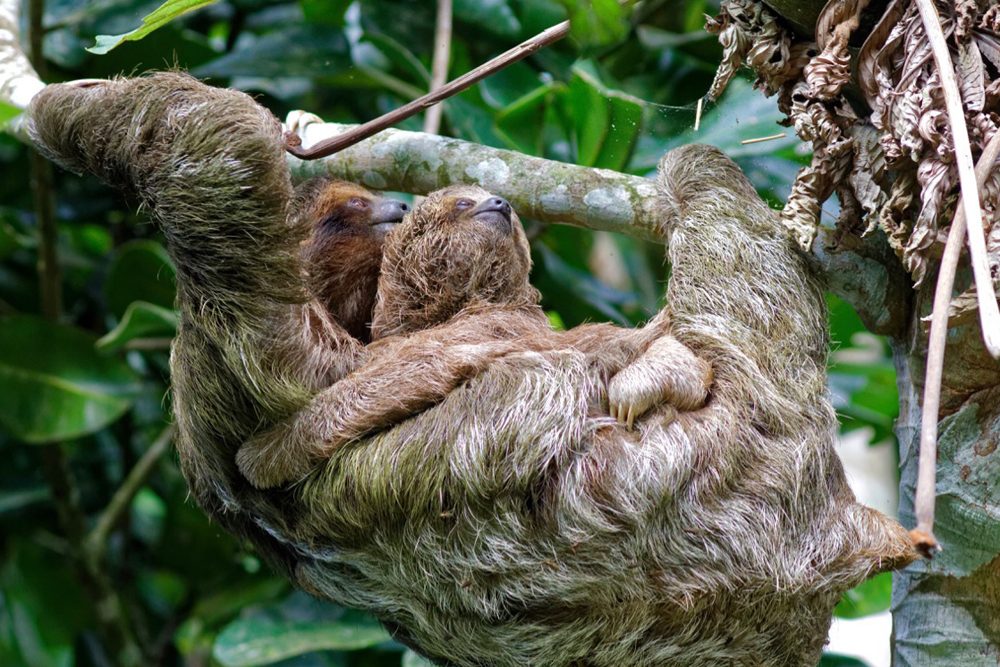
Sloth mother and baby, Costa Rica. Photo: William Grandados R. Photography
The Toucan Rescue Ranch was founded in 2004 to rescue, rehabilitate, and release toucans. MINAE, Costa Rica’s wildlife governing agency, noticed the success TRR had with these birds and began bringing them various other species in distress. In 2007, when a baby sloth named Millie arrived, TRR transitioned into a full-time, multi-species wildlife rescue facility that specializes in toucans, sloths, and owls. A visit to the ranch guarantees unforgettable memories.
If your dream is to see the quetzal and to photograph some of Costa Rica’s most brilliant hummingbirds, go to Paraiso Quetzal Lodge. You can sit at their feeders to photograph hummingbirds, have a private bird blind all to yourself, and stay for a couple of nights to trek on nearby farms where nests of resplendent quetzals have been identified. A naturalist will show you the way, set up a spotting scope, and step aside so you can take in the scene.
Best for thrill-seekers
White-water rafting. Costa Rica is a narrow country with a spine of mountains down the middle. This makes for world-class rivers appropriate for all ages and abilities, with dramatic tropical scenery and warm water. The river with the best balance of scenery and level of difficulty (for courageous first-timers to experienced rafters) is the Pacuare. Priscilla can arrange one-day float trips and multi-day adventures.
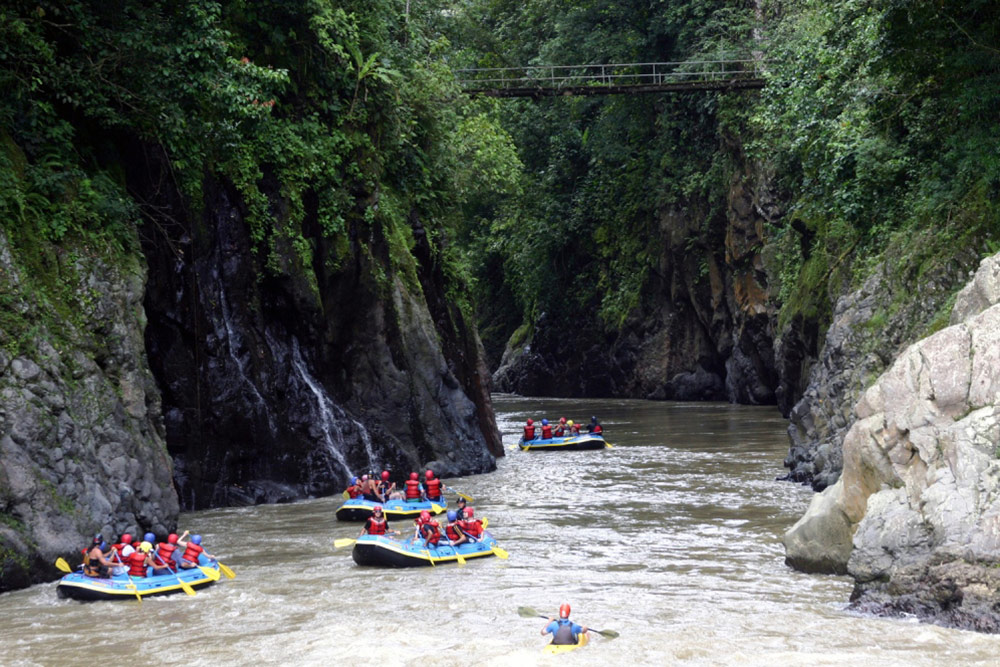
White water rafting tour on the Pacuare River Canyon. Courtesy Costa Rica Expeditions Staff
Beach worth the trek
San Josecito Beach, on the western edge of the Osa Peninsula, is gorgeous, remote, and little-visited. Hike from Drake Bay for four miles on the beach, through secondary rain forest, and past a tiny town with a school and a soccer field. Cross the Rio Claro, where there is a great swimming hole. If you don’t want to get wet, there’s a guy named Clavito who will take you across in his boat. The approximately four-hour trip brings you to a beach that is protected from the waves by a rock shoal, making it ideal for swimming. (Temperatures are routinely in the low 90s here, and the humidity is seldom less than 90 percent, so bring two liters of water per person.) You can arrange a boat for the 30-minute return trip, and also to bring you a picnic. To ensure availability of boats, ask to schedule this hike when Priscilla plans your trip, or when you book a hotel in the area. (Don’t visit Drake Bay in September or October, when it rains even more than usual.)
Prime picnic spot
The gardens of Monteverde Lodge & Gardens. Just let the staff know that you want your lunch to go and they’ll prepare it in a basket, with a blanket alongside, at no extra charge.
How to spend a Sunday
Costa Rica has two national religions: Catholicism and futbol (soccer). Do as the locals do and go to mass, then a soccer game. There are churches in every town, usually on the central square. In the smaller towns, the soccer field is often on the other side of the square. After mass, many people will stay in the plaza and socialize for an hour or more. Stake out a bench and people-watch. If you see a long line, it is probably for snow cones.
Best Times to Go

To a great extent, when to go depends on your interests and on which regions you plan to visit (as weather patterns vary widely). For instance, if your main reason to go is birding, the right time would be very different than if your main reason to go is white-water rafting.
For Pacific and Central Costa Rica, mid-April to mid-May (after Easter) is ideal. There are hardly any tourists. The mornings are usually crystal clear; the afternoon rains that signal the end of the dry season turn the brown forest to green in the northern Pacific, and then cause many trees to come into fruit. This a time when many birds and some mammals give birth.
The Caribbean Coast has three seasons: very rainy, rainy, and least rainy. September is not only the least rainy, it is the least crowded, and the best month to see both turtle nesting and hatching on the beaches of Tortuguero. October is normally only a little rainier than September. It’s a great month for fishing, wildlife, and turtle hatching, but there’s less of a chance to see nesting.
Worst Times to Go
Christmas and New Year’s are the most crowded and expensive time of the year, and Costa Ricans—who are usually quite open with visitors—are too busy to have much time for strangers. Easter is almost as bad.
Biggest Rookie Mistake
Thinking that you can book a week at one of the high-end beach resorts in the northwest and take day-trips to see the rain forest. Costa Rica’s rain forests are farther down the Pacific coast and across the country on the Caribbean side. The beaches closest to them often have rough surf or steep approaches, and the resorts there tend to have fewer bells and whistles. Consider your priorities when choosing a beach resort, and keep in mind that covering even short distances in Costa Rica can be grueling (dirt roads) and expensive (internal flights aren’t cheap).
The Souvenir
One of Sergio Pucci’s coffee-table books. Sergio and his father and brother have produced several tomes with some of Costa Rica’s best photography, including Costa Rica Aérea, which features one-of-a-kind aerial photos.
Can't-Miss Photo Ops
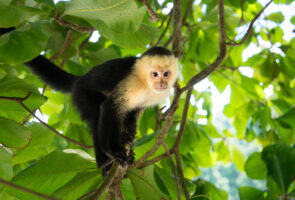
Rainbows are formed when sunlight shines through mist. The best places to see and photograph rainbows are near waterfalls, and in the Monteverde cloud forest area.
Spend two hours looking for wildlife with at least a 300mm lens in either the Corcovado or Tortuguero rain forest, and you will almost surely get a good shot of a monkey in the wild.
Tipping Tip
By law, a 10 percent tip is added to all restaurant bills. It used to be very rare for Costa Ricans to tip; now an additional 5 to 10 percent is more common.
Airport Intel
At San José Airport, don’t get into just any taxi. Before exiting the terminal, hire one from the Taxis Unidos Company. These are the orange taxis; unlike the unlicensed cabs, they’re safe, reliable, and will charge you the right price.
Don't Forget to Pack
Binoculars are essential for wildlife viewing, yet many people travel to Costa Rica without them. It’s best if each person in your group has their own, but sharing is better than not having them at all. The Nikon Monarch 8×42 is a decent starter option; get 7×32 magnification as a minimum.
A collapsible umbrella. If you use a poncho or rain jacket, you’ll be just as soaked from sweat as you would be from the rain.






